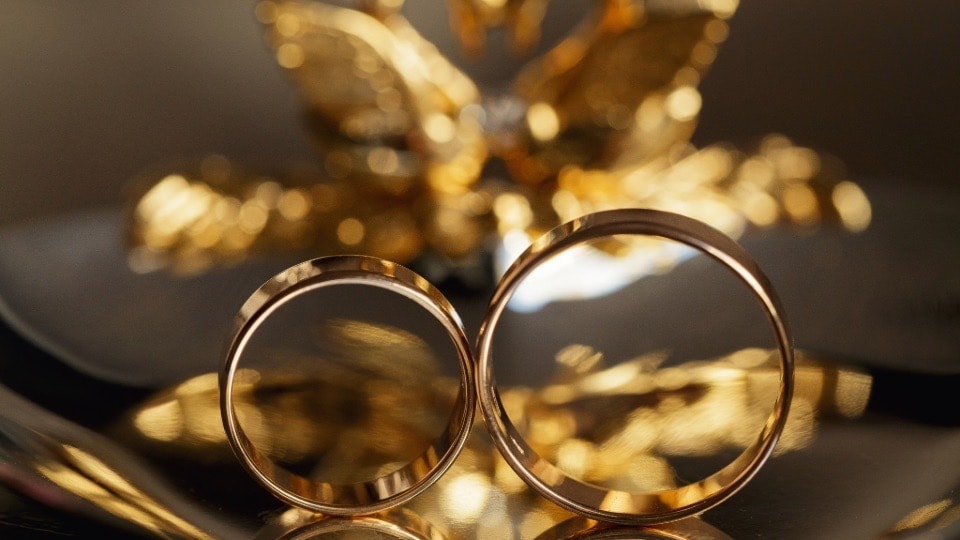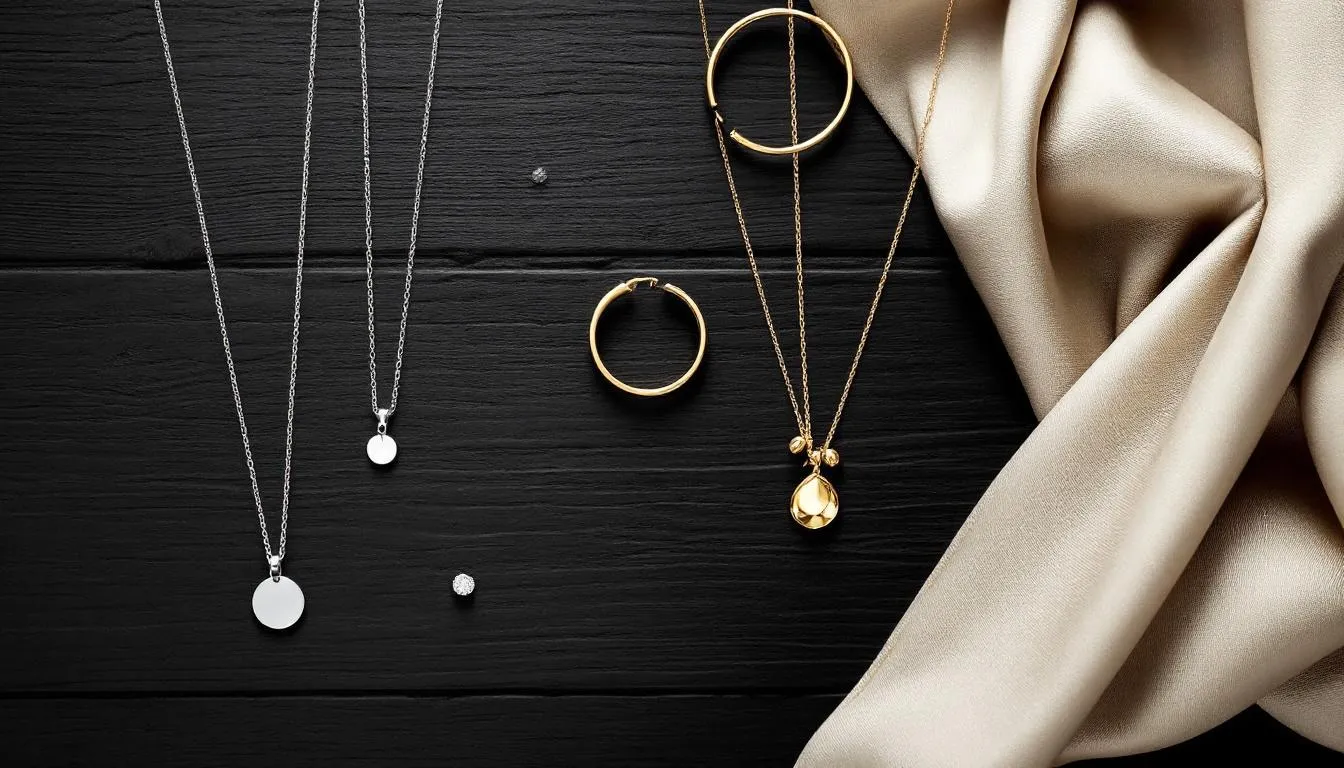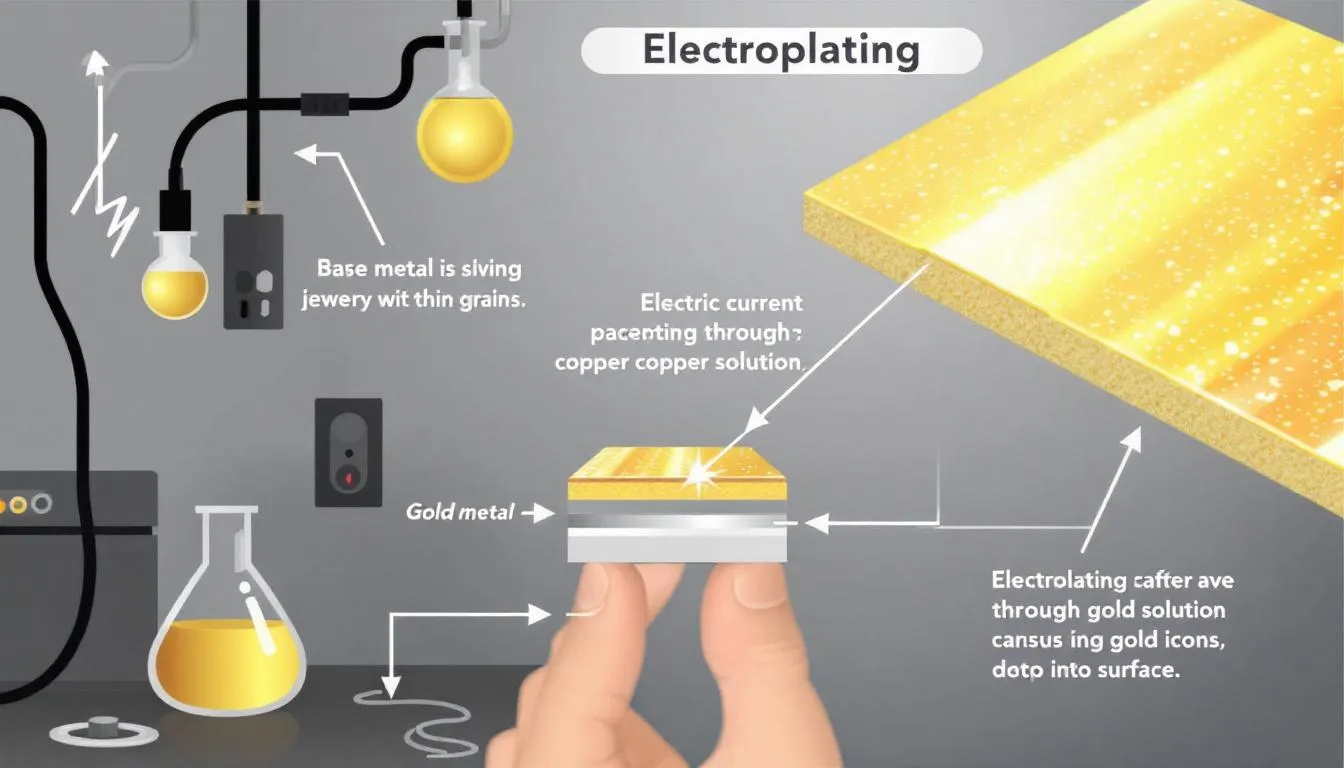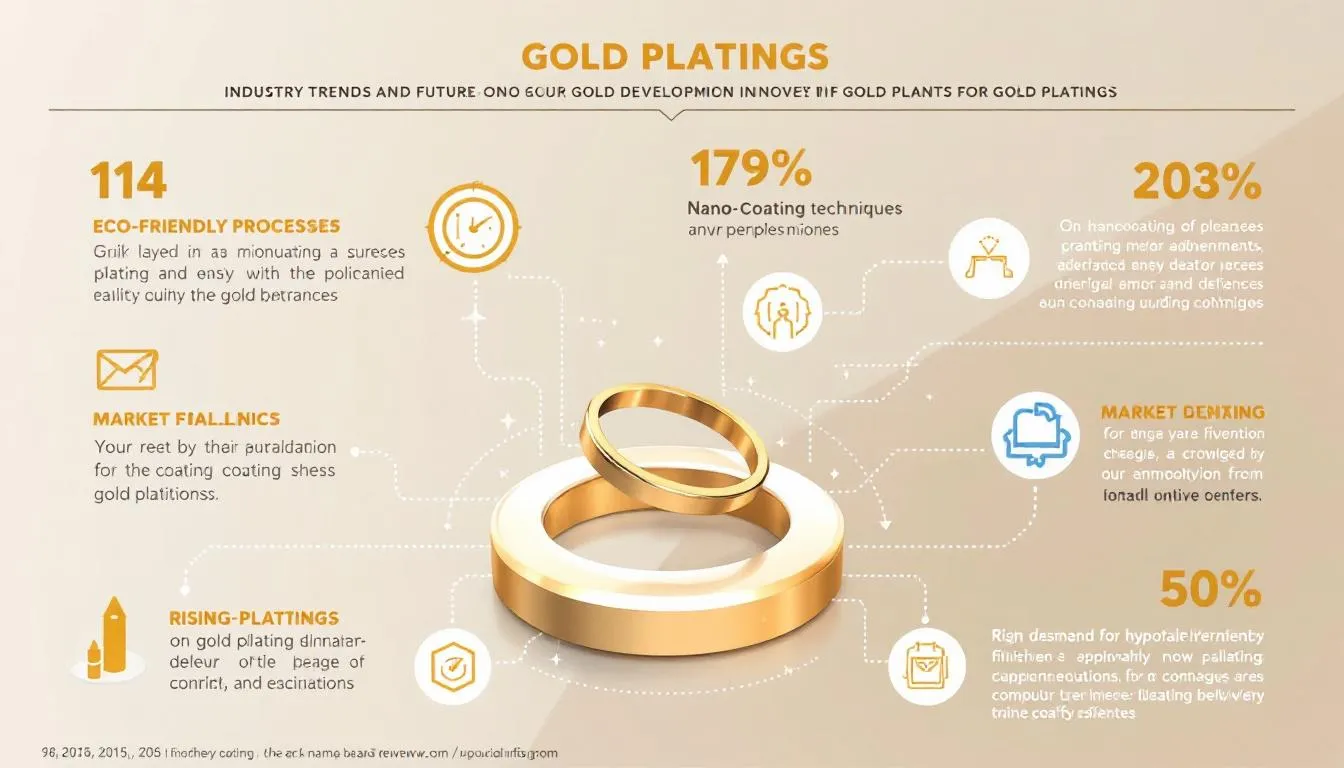Gold Plating Jewellery: 5 Types and Complete Guide 2025
Understanding Types of Gold Plating: Your Complete Guide to Jewellery Options
Plating has revolutionised the jewellery industry by making the luxurious appearance of gold plated jewellery accessible to everyone. At Saras Beads & Jewellery, located in St. George’s Shopping Centre in Harrow, we understand that choosing the right type of gold plating can be overwhelming. This guide will help you understand gold plated the different types of plating available and make an informed decision for your next gold plated bracelet or other jewellery piece jewellery purchase.
Gold plating is a process where a thin layer of gold is applied to the surface of another metal, typically brass, copper, or sterling silver. This technique allows jewellery makers to create beautiful pieces that have the appearance of solid gold at a fraction of the cost. Gold plated jewelry is much cheaper than other types of gold jewelry due to the small amount of gold used. However, gold plated jewelry is more prone to tarnishing and can rub off easily compared to both gold filled and gold vermeil jewelry. Gold plating enhances the appearance, durability, and even conductive properties of the base metal. Additionally, gold plating is biocompatible and resistant to corrosion, making it suitable for medical tools and implants.
Understanding gold plating is essential when shopping for gold jewellery. Each type offers distinct advantages and considerations, from longevity and maintenance to price and aesthetic appeal. Whether you want an affordable everyday piece or a special occasion accessory, knowing the differences between gold plating types will help you make the best choice. For those seeking a long-term investment, solid gold jewelry is considered a wise choice as it retains its value over time and maintains its shine without fading, unlike gold plated or vermeil options. Solid gold jewelry is made entirely of gold and is the highest quality type of gold jewelry available. Solid gold jewelry is often recommended for sentimental or everyday pieces due to its durability and low maintenance needs.
The 5 Essential Types of Plating for Modern Gold Jewellery
1. Standard Gold Plated Jewelry: The Entry-Level Option
Standard gold plating involves applying a very thin layer of gold, typically between 0.25 to 2.5 microns thick, onto a base metal such as brass or copper. The gold content in standard gold plated jewellery pieces usually accounts for less than 0.05% of the total weight, making it the most economical option for those seeking the golden aesthetic without the premium price tag. The higher the karat of solid gold, the more gold content it has, which significantly affects its value and durability. The quality of gold jewelry can depend on the karat, with 24k being pure gold and lower karats indicating a mix with other metals. The softness of pure gold (24k) makes it less ideal for jewelry, which is why alloys are used in solid gold pieces.
The electroplating process begins with thorough cleaning of the base metal. The piece is immersed in a solution containing gold ions, and an electric current deposits the gold onto the surface, creating a uniform golden appearance that mimics solid gold jewellery.
gold plated jewellery offers affordability and a wide variety of designs, ideal for everyday accessories. However, the thin gold coating is susceptible to wear and may fade or tarnish after several months of use. Exposure to moisture, perfumes, lotions, and skin oils accelerates wear. The base metal may become visible through scratches, potentially causing skin discolouration in sensitive individuals. Typically, gold plated jewellery lasts about a year depending on usage, while heavy gold plated options may provide improved durability.
2. Gold Vermeil Jewelry: The Premium Sterling Silver Choice
Gold vermeil jewellery uses a sterling silver base (92.5% pure silver) coated with at least 2.5 microns of gold. This thicker gold layer makes vermeil more durable than standard gold plated jewellery and suitable for regular use. Gold vermeil consists of at least 2.5 microns of gold plating on a sterling silver base, making it longer-lasting compared to standard gold plated jewelry.
The sterling silver foundation is hypoallergenic, ideal for sensitive skin, and adds intrinsic value. Gold vermeil pieces often feature intricate designs and finer craftsmanship, rivaling solid gold pieces in appearance. However, gold vermeil can tarnish if not cared for properly, as its base metal is sterling silver, which can oxidize. Gold vermeil is hypoallergenic due to its sterling silver base, which makes it suitable for people with metal allergies.
Proper care includes regular cleaning with silver polishing cloths and storage in anti-tarnish pouches to prevent oxidation of the silver base.
3. Gold Filled Jewelry: The Durable Alternative
Gold filled jewellery is created by mechanically bonding a solid layer of gold to a base metal core, typically brass. The gold content must constitute at least 5% of the total weight, which is significantly more than standard gold plated pieces. For example, 14k solid gold, commonly used in jewelry, contains 58.3% gold, offering a balance of durability and beauty. Solid gold jewelry is made entirely of gold, with no base metal involved.
This mechanical fusion creates a permanent bond, resulting in a thick gold layer that extends throughout the piece, providing exceptional durability. Gold filled jewellery resists tarnishing and wear, lasting for decades with proper care.
Gold filled pieces offer excellent value for those seeking quality without the premium price of solid gold. The thick gold layer also reduces allergic reactions, making these pieces suitable for sensitive skin.
4. Flash Gold Plating and Flash Plated Jewelry: The Ultra-Thin Option
Flash gold plating applies an extremely thin layer of gold, typically less than 0.5 microns thick, to achieve a golden appearance at minimal cost. This method is mainly used for fashion jewellery and costume pieces where aesthetics take priority over durability.
The flash plating process uses shorter exposure times and lower gold concentrations, resulting in a light coating that fades within weeks or months of use. These pieces are ideal for short-term fashion trends but unsuitable for daily wear.
Despite its limitations, flash plating offers an affordable way to experiment with styles for special occasions or photoshoots.
5. Heavy Gold Plating: The Enhanced Durability Choice for Gold Plated Pieces
Heavy gold plating applies a thicker gold layer, typically between 2.5 to 5 microns, offering improved resistance to wear and longer lifespan than standard gold plating. It bridges the gap between standard gold plated jewellery and gold filled options.
The process requires extended electroplating times and multiple coating cycles, increasing cost but enhancing durability and appearance retention.
Heavy gold plated pieces maintain their lustrous appearance longer and resist tarnishing better, making them suitable for regular use. The thicker coating also gives a richer, more premium look.
Gold Plated Product: Affordable Elegance for Every Occasion
They provide the luxurious look of gold without the high price tag of solid gold. By applying a thin layer of real gold over a base metal using the gold plating process, manufacturers create stunning gold toned jewellery suitable for various styles and occasions.
While the gold layer is thin and requires proper care to maintain its shine, gold plated products are perfect for experimenting with fashion trends or adding sophistication to everyday wear without significant investment.
Caring for Your Gold Plated Jewellery: Essential Maintenance Tips
Proper care maximises the lifespan and appearance of gold plated jewellery. Minimise exposure to water, chemicals, friction, and environmental factors that can accelerate wear.
Store pieces separately in soft pouches or compartments to prevent scratching. Avoid humid environments like bathrooms.
Clean gently with a soft, lint-free cloth after each wear. For deeper cleaning, use warm water with mild soap, avoiding harsh chemicals and abrasive cleaners. Dry thoroughly before storage.
Apply perfumes, lotions, and cosmetics before putting on jewellery. Remove pieces before swimming, exercising, or activities causing excessive sweating.
Gold Plating Comparison: Making the Right Choice for Gold Jewelry
|
Plating Type |
Gold Thickness |
Durability |
Price Range |
Best For |
|---|---|---|---|---|
|
Flash/Wash |
< 0.5 microns |
1-3 months |
£5-£20 |
Fashion trends, special occasions |
|
Standard |
0.5-2.5 microns |
6-12 months |
£15-£50 |
Everyday wear, budget-conscious |
|
Heavy |
2.5-5 microns |
1-3 years |
£30-£100 |
Regular use, better durability |
|
Vermeil |
2.5+ microns |
2-5 years |
£50-£200 |
Luxury feel, sensitive skin |
|
Gold Filled |
5% by weight |
10-30 years |
£40-£150 |
Long-term investment, heirloom pieces |
Consider your needs, budget, skin sensitivity, and how often you plan to wear the piece when choosing gold plating. Solid gold jewelry lasts for many lifetimes when properly cared for and can be passed down as heirlooms.
For everyday wear, gold filled or heavy gold plating offer the best value and durability. Special occasion or trend-driven pieces may suit standard or flash plating options. For those preferring timeless jewelry, consider our Sterling Silver Clover Bracelets for everyday elegance.
The Science Behind Gold Plating Techniques in Gold Jewellery
Electroplating involves chemical and electrical processes depositing gold ions onto a base metal to form a continuous metallic layer. Thickness, measured in microns, affects durability and cost. Gold plating improves the reliability and corrosion resistance of electronic components such as sensors and spark plugs. Gold-plated contacts ensure reliable electrical connections, especially for low-voltage signals in circuit boards. Soft gold plating, often used in electronics, provides excellent conductivity and low contact resistance, making it ideal for precision applications.
Preparation includes cleaning, degreasing, and sometimes intermediate layers for better adhesion. Palladium plating may be applied first to prevent tarnishing.
Gold plating can be applied to brass, copper, sterling silver, or solid gold bases. Non-metal materials cannot be plated due to lack of conductivity.
Modern facilities use precise controls for temperature, solution agitation, and current to ensure uniform plating quality.
Environmental and Ethical Considerations in Gold Plating Gold Jewellery
Gold plating reduces the amount of gold needed, lessening environmental impact from mining. Many plating facilities recycle gold from waste streams, minimizing waste. Additionally, gold plating is used in demanding aerospace applications due to its thermal endurance and resistance to corrosion and radiation, ensuring reliability in extreme conditions.
Ethical sourcing ensures gold comes from responsible suppliers adhering to labor and environmental standards.
Consumers can support sustainability by choosing brands transparent about their sourcing and environmental practices.
Industry Trends and Future Developments in Gold Plating for Gold Jewellery
New techniques like pulse plating, nano-coating, and PVD (Physical Vapor Deposition) offer more durable, uniform coatings with improved adhesion and corrosion resistance. PVD creates a very durable gold finish by vaporizing gold and depositing it in a vacuum chamber, ensuring a high-quality and long-lasting result.
Digital manufacturing and 3D printing enable precise control over plating thickness and distribution, reducing waste.
Transparency and consumer education are improving industry standards and product information.
Conclusion: Making Your Gold Plating Decision for Gold Jewellery
Choosing the right gold plating depends on your budget, intended use, durability needs, and preferences.
Standard or flash plating suit affordable, trend-driven pieces with limited wear. Gold filled or heavy plating offer durability and long-term value for regular use.
Gold vermeil provides luxury appeal with a sterling silver base, ideal for sensitive skin and affordable elegance.
At Saras Beads & Jewellery, we help you find pieces that match your style and needs. Visit us at St. George’s Shopping Centre, Harrow, or online at sarasbeads.co.uk.
Frequently Asked Questions (FAQs)
What is gold plating and how does it differ from solid gold jewelry?
Gold plating is a process where a thin layer of real gold is applied over a base metal such as brass, copper, or sterling silver to create gold plated jewelry. This gold coating gives the appearance of solid gold but uses much less actual gold, making it more affordable. In contrast, solid gold jewelry is made entirely of gold alloy, without any base metal, offering greater durability, hypoallergenic properties, and lasting value.
What are the main types of gold jewelry available?
The most common types of gold jewelry include gold plated pieces, gold vermeil jewelry, gold filled jewelry, and solid gold jewellery. Gold plated jewellery has a thin layer of gold over a base metal, often brass or copper. Gold vermeil jewelry uses a sterling silver base with a thicker layer of gold coating, typically at least 2.5 microns thick, making it more durable and hypoallergenic. Gold filled jewellery features a thick layer of gold mechanically bonded to a base metal core, usually brass, offering excellent durability. Solid gold jewelry consists entirely of precious metal gold alloy, such as yellow gold, rose gold, or white gold.
What is gold vermeil jewelry, and how is it different from gold filled jewelry?
Gold vermeil jewellery is created by applying a thick layer of gold over a sterling silver base, combining the beauty of precious metals with a hypoallergenic foundation suitable for sensitive skin. Gold filled jewelry, on the other hand, has a thicker gold layer mechanically bonded to a base metal core, often brass. While both have a thicker layer of gold than standard gold plated pieces, gold filled jewellery generally contains more gold content by weight and offers better durability for everyday wear.
How much gold is used in gold plated, vermeil, and gold filled jewelry?
Gold plated pieces usually have the thinnest layer of gold, often less than 0.05% of the total weight, resulting in a thin gold coating that can wear off with frequent use. Gold vermeil pieces have a thicker layer, typically at least 2.5 microns, over a sterling silver base. Gold filled jewellery contains the thickest layer of gold, constituting at least 5% of the total weight, providing enhanced longevity and resistance to tarnish.
Can I wear gold plated jewelry every day?
Gold plated jewelry is generally more delicate due to its thin layer of gold and may wear off with frequent wear, especially when exposed to moisture, lotions, or perfumes. For everyday wear, gold filled or gold vermeil pieces are better suited because of their thicker gold layers and more durable construction. Solid gold jewellery is ideal for daily wear due to its durability and resistance to tarnishing.
Is gold plated vermeil the same as gold filled?
Gold plated vermeil refers to gold vermeil jewelry that has been gold plated over a sterling silver base with a thick layer of gold. Gold filled jewelry differs as it has a mechanically bonded thick layer of gold over a base metal core, such as brass. Both offer more durability than standard gold plated pieces but differ in their base metals and manufacturing processes.
What are the benefits of buying solid gold jewelry?
Buying solid gold jewellery means investing in pieces made entirely of precious metal gold alloy, such as yellow gold, rose gold, or white gold. Solid gold is hypoallergenic, does not tarnish, and retains its value over time. While more expensive upfront, solid gold jewellery is durable and can be passed down as heirlooms, making it a wise long-term investment.
How do I care for gold plated and gold filled jewellery to extend their lifespan?
To maintain gold plated and gold filled jewellery, avoid exposure to water, chemicals, and abrasive materials. Remove jewellery before swimming, showering, or applying lotions and perfumes. Store pieces separately in soft pouches to prevent scratching. Clean gently with a soft cloth and mild soap when necessary. Proper care helps preserve the gold layer and keeps your jewellery looking beautiful.
Is gold vermeil suitable for people with sensitive skin?
Yes, gold vermeil jewellery is often recommended for sensitive skin because it uses a sterling silver base, a precious metal known for its hypoallergenic properties. The thicker layer of gold plating also provides a protective barrier, reducing the risk of skin irritation compared to gold plated pieces with base metals like brass or copper.
What is flash plated jewelry, and why is it less durable?
Flash plated jewelry has an ultra-thin gold layer, often less than 0.5 microns thick, applied quickly to create a gold toned jewelry look at a low cost. Because of the very thin layer of gold, flash plated pieces wear out quickly, making them suitable only for occasional wear or costume jewelry rather than frequent wear or long-term use.
Can gold plated jewellery tarnish or fade over time?
Yes, gold plated jewellery can tarnish or fade, especially when exposed to moisture, sweat, chemicals, or frequent wear. The thin layer of gold eventually wears off, revealing the base metal underneath. Choosing gold vermeil or gold filled jewellery can offer better resistance to tarnishing due to their thicker gold layers.
How can I tell if a piece is gold plated, gold filled, or solid gold?
Gold plated pieces often feel lighter and have a thin layer of gold that may wear off. Gold filled jewellery is heavier with a thick gold layer bonded to the base metal, making it more durable. Solid gold jewellery is made entirely of gold alloy and usually stamped with karat marks (e.g., 14k, 18k). Testing by a jeweller can confirm the composition if unsure.
What are the different colors of gold available in gold jewelry?
Gold jewelry can come in various colors depending on the gold alloy used. The most common are yellow gold, rose gold, and white gold. Yellow gold has a warm, classic tone, rose gold offers a pinkish hue, and white gold provides a silvery appearance often plated with rhodium for extra shine.
Is gold plating environmentally friendly?
Gold plating uses a minimal amount of actual gold compared to solid gold jewelry, reducing the demand for newly mined gold, which can have significant environmental impacts. Many plating facilities recycle gold from waste streams to minimize waste and support sustainable practices.
Can gold plated jewelry be re-plated?
Yes, gold plated jewelry can be re-plated to restore its gold layer when it wears off. However, repeated plating may affect the details of intricate designs. Proper care and choosing thicker gold plated vermeil or gold filled pieces can reduce the need for frequent re-plating.
What does karat mean in gold jewelry?
Karat indicates the purity of gold in a gold alloy. Pure gold is 24 karats, but due to its softness, gold is often alloyed with other metals to increase durability. For example, 14k gold contains 58.3% gold, balancing durability and precious metal content.
How does gold plating benefit electronics and medical applications?
Beyond jewelry, gold plating enhances the corrosion resistance and conductivity of electronic components and medical tools. Its biocompatibility and resistance to tarnish make it ideal for implants, sensors, and connectors requiring reliable performance.








 https://sarasbeads.co.uk
https://sarasbeads.co.uk
Leave a comment